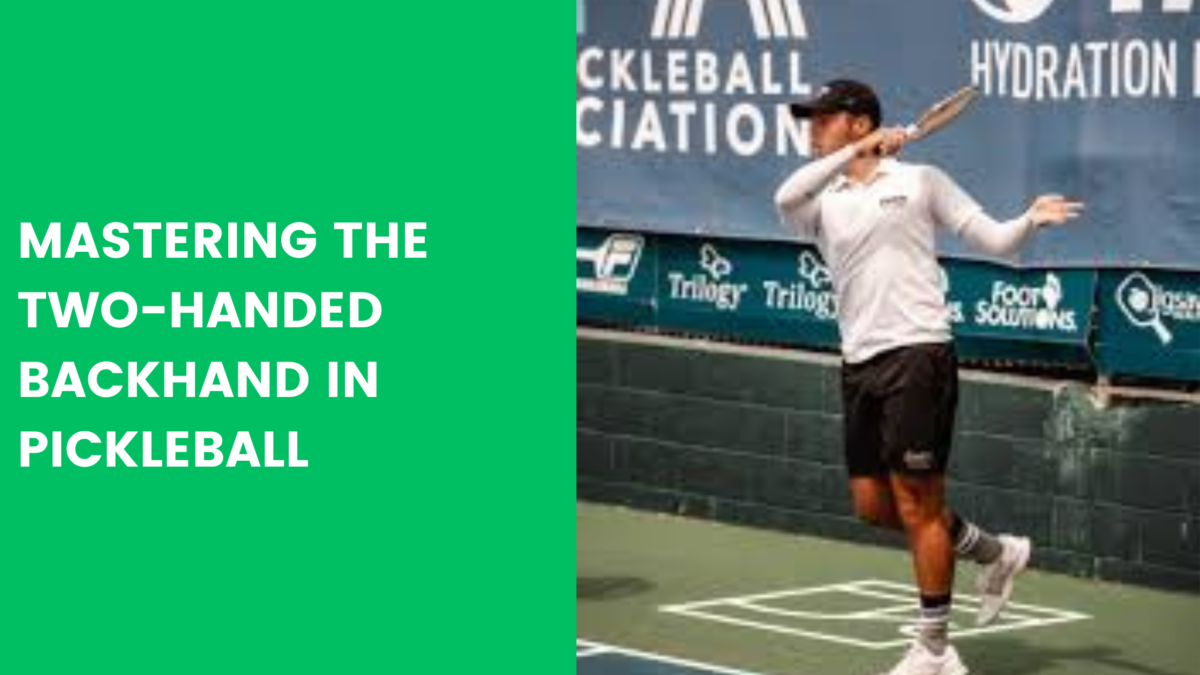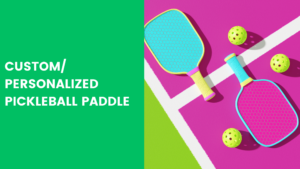If you’re diving into the exciting world of pickleball, you might have already noticed that mastering various techniques can significantly enhance your gameplay. One such technique is the two-handed backhand. This article will guide you through everything you need to know about perfecting the two-handed backhand in pickleball.
The Basics of a Two-Handed Backhand
The two-handed backhand is a technique where both hands are placed on the paddle, providing better control and power. This technique is especially beneficial for players transitioning from tennis, where the two-handed backhand is common. Compared to a one-handed backhand, the two-handed version offers more stability and precision.
Grip Techniques
To execute a proper two-handed backhand, the grip is crucial. There are several grip techniques to consider:
Eastern Grip
The Eastern grip is similar to the handshake grip. Place your dominant hand on the paddle as if shaking hands with it, and your non-dominant hand above, supporting the motion.
Continental Grip
The Continental grip involves placing the base knuckle of your index finger on the second bevel of the paddle. This grip is versatile and allows for quick transitions between shots.
Hybrid Grips
Hybrid grips combine elements of the Eastern and Continental grips, offering a balance of control and power.
Footwork Fundamentals
Proper footwork is essential for a successful two-handed backhand. Start with a balanced stance, feet shoulder-width apart. As you prepare to hit the ball, pivot on your back foot and step into the shot with your front foot. This positioning ensures stability and allows for an effective transfer of weight.
Swing Mechanics
Preparing for the Shot
Begin with your paddle in front of you and your body facing the net. As the ball approaches, pivot your shoulders and rotate your hips, bringing the paddle back.
Backswing and Forward Swing
The backswing should be smooth and controlled. As you initiate the forward swing, shift your weight from your back foot to your front foot, maintaining a firm grip on the paddle with both hands.
Follow-through
A proper follow-through is essential for accuracy and power. After making contact with the ball, continue the motion of your swing until the paddle is above your shoulder.
Power and Control
Generating power in your two-handed backhand comes from the coordinated movement of your legs, hips, and arms. Focus on a fluid motion, ensuring that your swing is neither too tight nor too loose. Control is maintained through a consistent grip and proper follow-through.
Also learn Pickleball Drills For Beginners
Common Mistakes to Avoid
Poor Grip
Ensure your grip is firm but not overly tight. An incorrect grip can lead to a loss of control and power.
Incorrect Footwork
Proper footwork is crucial. Avoid standing flat-footed or failing to pivot properly, as this can affect your balance and shot accuracy.
Inconsistent Swing
Consistency in your swing mechanics is vital. Avoid rushing your swing or stopping short on your follow-through.
Drills to Improve Your Two-Handed Backhand
Wall Practice
Practicing against a wall helps in developing consistency and control. Focus on maintaining a steady rhythm and proper form.
Partner Drills
Work with a partner to practice returning shots and improving your reaction time. This helps in simulating actual gameplay conditions.
Solo Drills
Use cones or markers to create a target area on the court. Practice hitting the ball into this area to improve your accuracy.
Advanced Techniques
Spin Shots
Adding spin to your backhand can make your shots more unpredictable and challenging for your opponent. Practice brushing the ball with your paddle to generate topspin or backspin.
Angle Shots
Angle shots involve hitting the ball at an angle to make it difficult for your opponent to return. This requires precision and control, which can be developed through targeted drills.
Using the Two-Handed Backhand in Gameplay
Offensive Strategies
Use your two-handed backhand to drive the ball deep into your opponent’s court, forcing them to move and potentially make errors.
Defensive Strategies
In defensive situations, the two-handed backhand can help you return challenging shots with better control and stability.
Mental Aspects of Playing Pickleball
Staying Focused
Maintaining focus during a game is crucial. Stay present and keep your eyes on the ball to anticipate your opponent’s moves.
Handling Pressure
Learning to handle pressure can improve your performance. Practice mindfulness techniques and stay calm under challenging conditions.
Equipment Recommendations
Choosing the Right Paddle
Select a paddle that suits your playing style. Consider factors such as weight, grip size, and material.
Suitable Clothing and Accessories
Wear comfortable, breathable clothing and appropriate footwear. Accessories like wristbands and visors can also enhance your performance.
Training and Coaching
Finding a Coach
A coach can provide personalized guidance and help you improve specific aspects of your game. Look for experienced coaches with a good track record.
Online Resources and Tutorials
There are numerous online resources, including videos and articles, that offer tips and tutorials on improving your two-handed backhand.
Conclusion
Mastering the two-handed backhand in pickleball takes time, practice, and dedication. By focusing on proper grip, footwork, and swing mechanics, you can enhance your gameplay and enjoy the sport to the fullest. Keep practicing and experimenting with different techniques to find what works best for you.
FAQs
Why choose a two-handed backhand?
A two-handed backhand offers better control and power, making it ideal for players who seek stability in their shots.
How long does it take to master the two-handed backhand?
The time it takes to master the two-handed backhand varies based on individual practice and experience. Consistent practice can lead to noticeable improvement within a few months.
Can I switch between one-handed and two-handed backhands?
Yes, players can switch between one-handed and two-handed backhands based on the situation and personal preference.
What are the benefits of a two-handed backhand in pickleball?
The benefits include increased control, power, and stability, making it easier to return challenging shots.
Are there any disadvantages to using a two-handed backhand?
The main disadvantage is the potential for reduced reach compared to a one-handed backhand. However, this can be mitigated with proper footwork and positioning.





